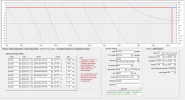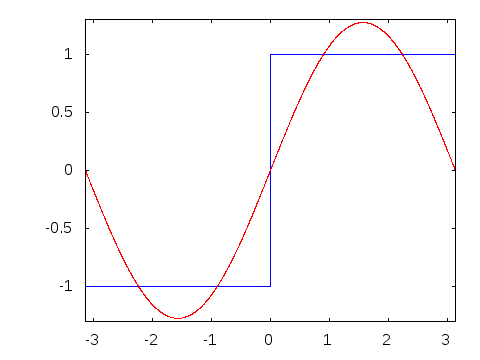May be. If you have never been exposed to the formula for a line in grade school or whatever (or have forgotten over the course of time) then understanding the concept may be difficult. I was trying to be reasonably concise so it may take a couple of readings to follow. I assumed most folk were familiar with the concept of linearity, a linear function for a straight line, and how a function that is not linear can create distortion. Group delay tells us if the phase is linear over frequency or instead it changes, creating distortion. In the time domain the distortion appears as smearing of the signal edges (rise and fall).
Apparently not.
A straight line of y = mx with m = 1 looks like the blue line below. If I make the slope (m) depend upon the input (x) we get the orange line, which is no longer perfectly straight. The next plot shows the error. This is what happens when group delay is not constant, the (phase) line is no longer straight.
View attachment 244707
View attachment 244708
Now try with some signals, in this case the first five frequencies in a square wave. The amplitudes decrease as frequency goes up (see
https://www.audiosciencereview.com/.../composition-of-a-square-wave-important.1921/). Notice how all nine signals line up in the middle and again at the end.
View attachment 244709
If all the signals arrive at the same time, that is group delay is constant, then this is what you see when you add them all up:
View attachment 244711
A perfect square wave has frequencies out to infinity, and this is just five, so it does not have perfectly sharp (straight) edges and the top and bottom are not perfectly flat. It is perfectly symmetric, however, with edges and top and bottom the same across the entire period.
Now adjust the group delay so it is not constant but instead each successively higher frequency is shifted just a little bit more. Notice how the signals no longer align perfectly in the middle and at the end but are spread out a bit:
View attachment 244712
The output when we sum them all looks different and is no longer symmetric:
View attachment 244713
We can see the difference more clearly by showing them both on the same plot:
View attachment 244714
Hopefully this helps visualize how group delay can impact the signal, and why constant group delay is a typical design goal.
Still doesn't necessarily say if I know what I am talking (writing) about... - Don





